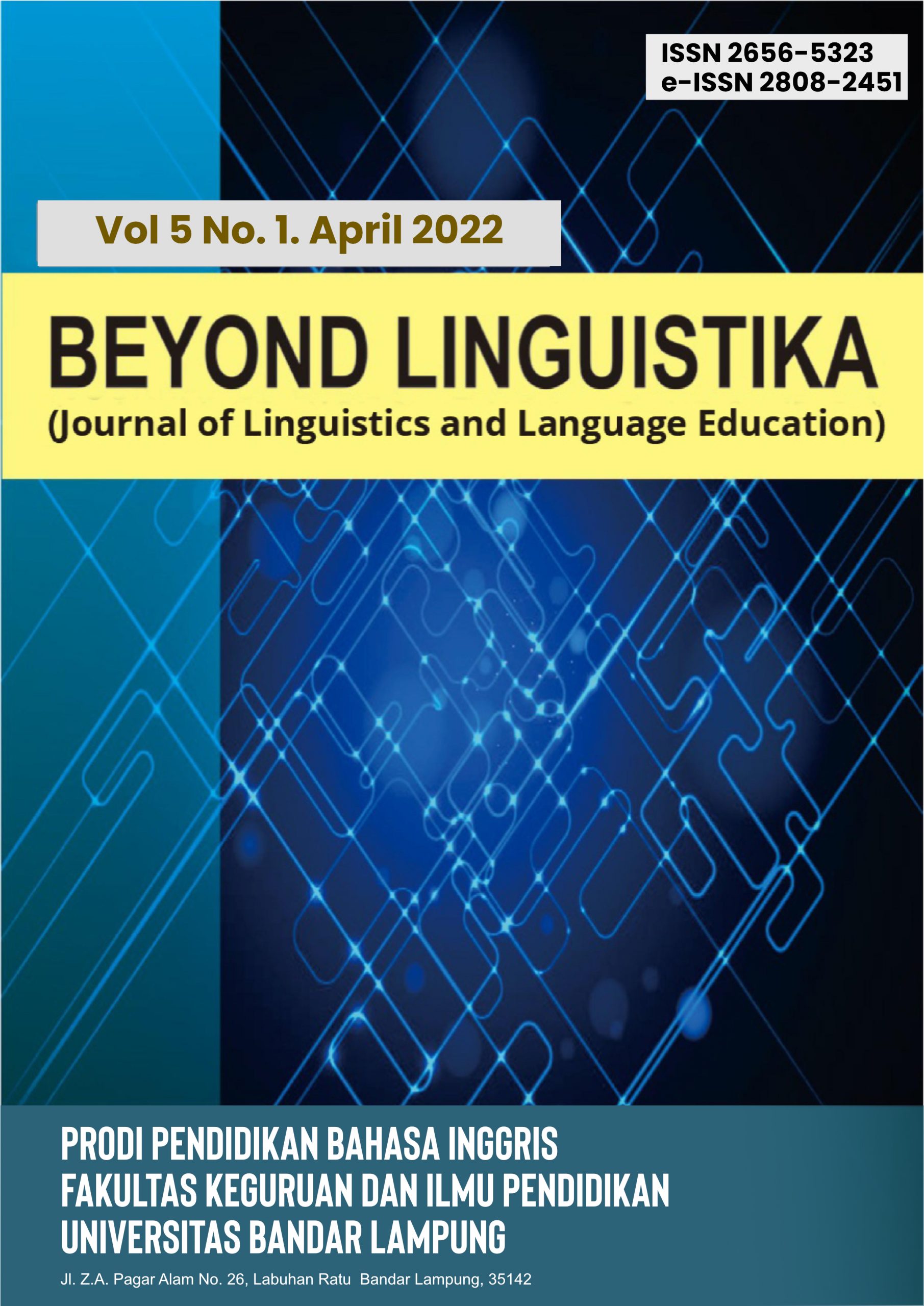THE IMPLEMENTATION OF EXTENSIVE READING AND EXTENSIVE LISTENING IN XREADING AS ENGLISH LEARNING APPROACH
Abstract
Keywords
Full Text:
PDFReferences
REFERENCE
Anggia, H., Verawati, N., &
Vandika, A. Y. (2018). Cultural
Content Analysis of English
Learning Materials at Four Senior
High Schools in Bandar
Lampung. English Education:
Jurnal Tadris Bahasa
Inggris, 11(2), 67-81.
Arikunto, S. (2010). Prosedur
Penelitian Suatu Pendekatan
Praktik. Jakarta: Rineka Cipta.
Bambang, Riyanto. 2001. DasarDasar Pembekalan Perusahaan,
Edisi Keempat, Cetakan Ketujuh,
BPFE Yogyakarta, Yogyakarta.
Day, R. R. (2015). Extending
extensive reading. Reading in a
Foreign Language, 27(2),294-
Day, R. R., & Bamford, J. (1998).
Extensive reading in the second
language classroom. Cambridge:
Cambridge University Press.
Day, R. R. & Bamford, J. (2002).
Top ten principles for teaching
extensive reading. Reading in
Foreign Language. 14 (2), 136-
Educational Research Technique
(2015, March 16). Approach,
Method, Procedure, and
techniques in Language Learning
[Blog spot].
Harmer, Jeremy (1998). The
Practice of English Language
Teaching. New York: longman.
Lubis,R. B. (2014). Persepsi
siswa terhadap metode resitasi.
Universitas Negri Yogyakarta.
Lynch, T. (2009). Teaching
second language listening: A
guide to evaluating, adapting, and
creating tasks for listening in the
language classroom. Oxford, UK:
Oxford University Press.
Mayora, C. A. (2017). Extensive
listening in a Colombian
university: Process, product, and
perceptions. HOW, 24(1), 101-
Puja, J. H., & Kadlaskar, L. M
(2010). A new lossless method of
image compression and
decompression using Huffman
coding technique. Jurnal of Theorical & Applied Information
Technology, 15.
Rahayu.C. (2018). Students’
perception of using animation
video in teaching listening of
narrative text.
Walgito, B. (2010). Pengantar
Psikologi Umum. Yogyakarta:
Andi Offset.
Waring R. (2003). The
Relationship between Extensive
Reading and Extensive Listening.
Waring, R. (2011). Extensive
Reading in English Teaching.In
Widodo, H. & A. Cirocki (Eds.)
Innovation and Creativity in ELT
Methodology (pp. 69-80). Nova
Publishers: New York.
https://xreading.com
DOI: http://dx.doi.org/10.36448/bl.v4i2.2309
Refbacks
- There are currently no refbacks.




